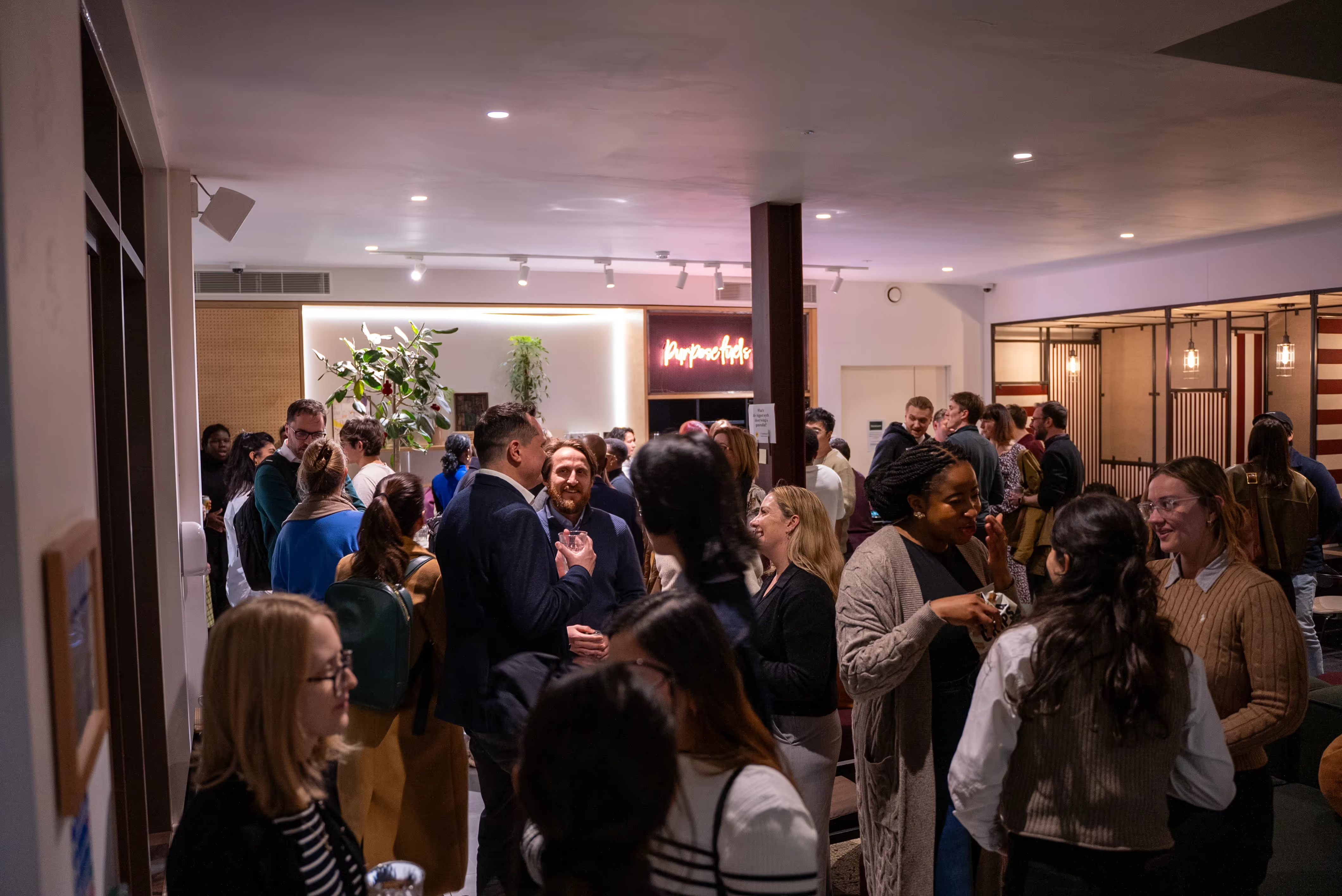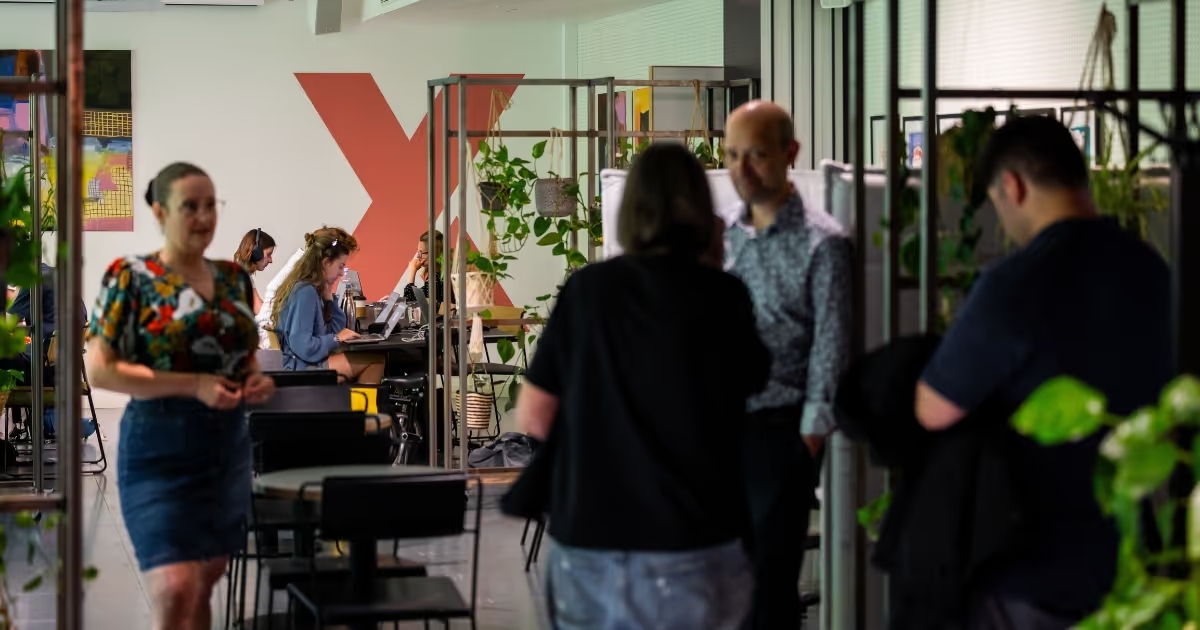DEI stands for Diversity, Inclusion and Equity. As creatures of our environments, cultivating an ecosystem with the principles of DEI at its core is central to fostering organisations that are representative, tolerant, creative and enable all members of the community to have the opportunity to flourish and reach their full potential. At x+why we believe in being the change you want to see in the world, which is why we understand that the format of the flexible office space is a key hub of this transformational potential.
DEI stands for Diversity, Inclusion and Equity. As creatures of our environments, cultivating an ecosystem with the principles of DEI at its core is central to fostering organisations that are representative, tolerant, creative and enable all members of the community to have the opportunity to flourish and reach their full potential. At x+why we believe in being the change you want to see in the world, which is why we understand that the format of the flexible office space is a key hub of this transformational potential.
{{divider}}
Most modern organisations are now beginning to recognise the critical need for actionable diversity, equity and inclusion (DEI) initiatives. Historically, people from marginalised backgrounds, especially Black, Indigenous and people of colour (BIPOC), have had their access to professional and educational opportunities hindered by systemic bias and socio-economic barriers. This lack of access has led to a striking disparity in representation across all levels in the modern workplace.
{{divider}}

Diverse Approaches to Diversity
{{divider}}
Workplace diversity refers to the different characteristics among a group of people. This includes race, ethnicity, gender, gender identity, sexual orientation, age and socioeconomics. It can also refer to differences in physical ability, veteran status, or martial and family status. Having a diverse array of people from a variety of walks of life is essential to creating a representative and innovative talent pipeline for leadership opportunities and workplace collaboration.
{{divider}}
A lack of diversity in the workplace starts with poor recruitment practices. One recent survey found that 67% of current job seekers list diversity as an important factor in choosing a potential workplace. Companies with planned DEI initiatives are able to build a positive employer brand reputation and get a helping leg-up over the competition when it comes to attracting top talent.
{{divider}}
Greater workplace diversity can also boost your bottomline - according to a study from BCG, organisations with greater diversity enjoy profits up to 45 percent higher than those with more homogenous cultures. A lack of DEI can also be costly, between turnover and the price tag associated with mitigating instances of discrimination, the Center for American Progress states businesses pay 64 billion dollars annually as a result of workplace bias.
{{divider}}
In order for workplaces to be able to help organisations fill more roles at every level, from the frontline to the C-suite, with a diverse array of talent, they need to be accessible to a diverse talent pool that represents the entire community. This means having a range of flexible options and strategies available specifically designed to uplift underrepresented workers. These include online and offline communities such as Hire Autism, Recruit Disability and 70 Million Jobs - a job board for people with criminal records.
{{divider}}
Training such individuals form the ground up will eventually help diversity to reach the C-suite. Important DEI factors will be overlooked if your executives all look and sound the same, and it’s crucial that your organisation’s top decision-makers represent a wide variety of perspectives.
{{divider}}
Your hiring team should also be given training on how to understand, recognise and avoid bias during the recruitment process. Even if a diverse pool of people are applying to your openings, discriminatory recruiting can undo your DEI efforts and uphold a homogenous workplace culture.
{{divider}}
When using a flexible office provider such as x+why, meeting and hiring diverse talent is simplified, as there is already an accessible and representative community on hand, where networking and collaboration are proactively encouraged. Hiring is a challenging process and warm leads generally have greater long-term success when it comes to company satisfaction and employee retention.
{{divider}}
Engaging Strategies for Equity
{{divider}}
Workplace equity is the process of ensuring that workplace systems and programmes are impartial, fair and provide equal possible outcomes for every individual. This means levelling the playing field and meeting the needs of each employee and their unique circumstances. When there is true equity in the workplace, every employee feels they are being treated fairly. For your business, this can be a big needle mover when it comes to employee engagement and retention.
{{divider}}
This is easier said than done, as it means customising strategies and processes given that there is ‘no one-size-fits’ all solution. For a start, having greater transparency around factors such as wages allows both individuals and managers to have a better understanding of how salary ties to job performance and responsibility in order to avoid biased pay gaps. To take things a step further, consider including a wage range on job descriptions.
{{divider}}
Workplace education programmes can provide employees with life-changing learning opportunities that help them grow with your business. Systemic barriers make it difficult for people from underrepresented groups to attain degrees and other forms of education required for jobs by many employers. Even with the qualifications on paper, many jobs still come with a catch-22 where it is difficult to attain the relevant initial experience, having open apprenticeships and internships will provide more people with the entry card they need to overcome this hurdle.
{{divider}}
Including Inclusion in The Workplace
{{divider}}
Workplace inclusion can be summed up as providing every employee with a sense of belonging. This means they feel comfortable and supported by the organisation when it comes to being their most authentic selves and having expressive freedom. Similar to equity, the business case for inclusion in the workplace is centred around engagement and retention.
{{divider}}
Workplaces can start being more inclusive by recognising more global holidays - it can be alienating to see one religious tradition recognised while your own cultural beliefs are not accommodated. Support inclusion in your workspace by allowing flexible time off so your employees can observe the customs that are most important to them.
{{divider}}
When it comes to collaboration and communication, it’s important to respect people’s identities. You can help make your work culture inclusive of gender-variant employees by normalising the sharing of preferred pronouns and avoiding binary language. Consider replacing “his/hers” with “theirs” in your internal communications, for example.
{{divider}}
A major part of feeling included means knowing that your voice will be heard if you speak up. As an organisation, your inclusion efforts should be communicated openly and your employees should feel safe communicating their concerns or feedback to management or relevant team members.
{{divider}}
Diversity, equity and inclusion initiatives all have a common goal: to create a working culture where employees know their value and are able to thrive. Workplaces are in a unique position to drive change through these simple, yet critical actions, where promoting diversity equity inclusion in the workplace is just the beginning of a much larger strategy for positive systemic change.
{{divider}}





.png)
.avif)


.avif)


.avif)
.avif)



